
Please, support PV!
It allows to keep PV going, with more focus towards AI, but keeping be one of the few truly independent places.
It allows to keep PV going, with more focus towards AI, but keeping be one of the few truly independent places.
GH2 color profile and Hacked vs. not Hacked Shootout
-
I finally finished the Color Profile and Hack vs. Not Hacked Shootout video. The link to my thoughts on the test cases are in the YouTube video below. However, that video alone should not be used to make a final conclusion since the examples in it have been re-compressed twice. It should be used as a guideline for what to look out for when you watch the original files as they came out of the camera.
You can download those files at the Vimeo link below. Please note that not all of the clips have been uploaded yet. I am still in the process of uploading them(Some of them are huge). If you don't see a sample that you need just let me know in the comments of the youtube video and I will try to get it uploaded.
http://vimeo.com/user442745/videos
Everything was shot under completely controlled conditions. I shot this in pure manual mode with Manual focus, a fixed shutter speed, and a fixed aperture.
The only in camera correction I made was that I increased the shutter speed 1/3 of a stop for Smooth since the camera meters that mode 1/3 of a stop more than any of the other modes.
The video shows the differences between the most popular color modes for video(Cinema, Smooth, and Nostalgic). In addition it shows the differences between unhacked 1.0 and 1.1 firmware and No Adverse Affects and Driftwood's 187M GOP1 [i-frame only] 1.0 firmware.
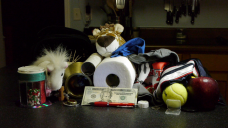
 Color Tests00008.png1920 x 1080 - 3M
Color Tests00008.png1920 x 1080 - 3M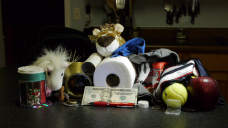
 Color Tests00014.png1920 x 1080 - 4M
Color Tests00014.png1920 x 1080 - 4M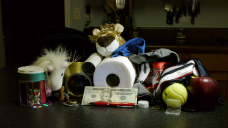
 Color Tests00026.png1920 x 1080 - 3M
Color Tests00026.png1920 x 1080 - 3M -
More pics. Please disregard the ones above. I accidentally mixed Cinema with Smooth.

 Color Tests00001.png1920 x 1080 - 3M
Color Tests00001.png1920 x 1080 - 3M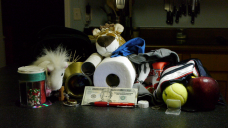
 Color Tests00002.png1920 x 1080 - 4M
Color Tests00002.png1920 x 1080 - 4M -
Nice work. You hit on a lot of the things I've been saying on this forum for a while now.
-
Nice work indeed. I respectfully disagree in one area. Colour grading. Try to place a lut on unhacked footage and it is a real shame. Place it on the high bitrate gop1 and it is a revelation. Not like F3 footage and better but my my does it get you somewhere in the courtyard of the colour grading palace. If RAW is the throne room, then the unhacked sees us standing at the front gate and the hack sees us knocking on the front door as far as getting as close to that expensive look as possible. Not just pushing saturation or messing with contrast but real number crunching where you push and pull the whole image. Tested this for many months now and there is no comparison. Of course my workflow entails using Cineform, firstlight and 3Dluts so not up everyone's alley. For folk who want their films to look like TV and don't really wish to change the in-camera look, by all means stick to the unhacked and save your HDD and data management issues. I may do a clear test some time to illustrate this but take my word for it - it isn't subtle. So getting rid of motion artifacts is one benefit but another benefit is indeed colour integrity. There is just more to work with once you start dealing with the highest bit rates. I appreciate that most folks do not care so much about manipulating the image in post. Thanks again for a great test. Take care
-
@HenryO
The intent of this was that people can download the original files and show the differences that they see. If you could download the hacked and unhacked footage and post process it in the exact same way then we can see the same thing you are seeing.
Thanks for watching. -
@mpgxsvcd
Thank you very kindly for conducting your test and sharing all this information.
What was your method and reference point for exposure?
Did you leave original exposure and change profiles, or adjust exposure for each profile and/or shot?
I too am trying to figure out which profile to use as my primary. For now, my mindset has been to never blow out any highlights. Interesting observations regarding the profiles you have highlighted. A flater profile, more highlight roll off would be ideal, in my opinion, to the extent that 8-bit 420 encode could handle without ill effects once corrected in post.
As @HenryO has mentioned, and posted some examples of his post process in another thread, it seems heavy post work reveals the unhacked files as being less robust.
Whilst my samples below are extreme, taking a VLC snapshot from the respective MTS files you posted on Vimeo, and applying a Levels adjustment from 0-255 to 0-10 range, you can see the pronounced macro blocking in the unhacked file's shadow and darker areas in the frame, more so than the file that was recorded with @driftwood's 187 patch. A/B the two files without this extreme Levels processing, and I can not see any particular visible difference at a glance.
Thank you again, I look forward to reviewing all the MTS files in further detail and learning more from yourself and other members participating in this discussion.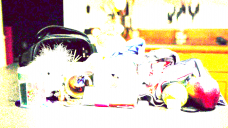
 00001 V1-1 Smooth ISO 160__0-10 Levels.png1920 x 1080 - 394K
00001 V1-1 Smooth ISO 160__0-10 Levels.png1920 x 1080 - 394K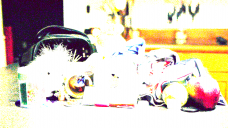
 00010 187 Smooth ISO 160__0-10 Levels.png1920 x 1080 - 566K
00010 187 Smooth ISO 160__0-10 Levels.png1920 x 1080 - 566K -
Can you summarize your findings? I view this stuff on laptops and smart phones and it all looks the same.
and thanks for doing this... -
I think the key here is to first determine ...WHAT you are shooting... If you are trying to shoot a flat image for grading to a "film/theatrical" look I still think its best to you Nostalgic or Smooth all -2... If you are shooting sports or events maybe cinema is the way to go....The baked in gamma makes it a no no in my book for filmic look stuff... The I-Dynamic is a problem because it will adjust while the camera moves ...sometimes I need shadows to stay black and this drove me nuts..but if I was shooting a football game or something outside in which DR is challenging ...then I could see the use of it. Again my point is there is no single answer because it is based on the needs of your shoot.
-
Downloading the samples now. The above samples from @WhiteRabbit illustrate how the macro blocking kills any good manipulation of the image but I will give an example from firstlight soon. @brianluce. Viewing it here on a full HD monitor and the difference is evident. The Hacked footage has a nicer finer grain where the unhacked has larger macro blocks. View on a large monitor if you get the chance.
-
@WhiteRabbit and @HenryO
Yes.. And more Yes, please. That's exactly the same sentiment I have toward this. Although the over adjusted stills show it to be very very obvious what has changed the most, I can tell without such extreme adjustments in my raw footage.
It takes a lot of patience to do these tests, however, and they aren't typically very rewarding so thanks, still, mpg for giving to the community. Someone will always find something wrong, others will find them useful, either way at least you did them. -
Thanks for the diligent effort you put into these tests. I didn't find a link to your conclusions, could you post it here?
-
Here ya go. Download and watch on an HD monitor please. Watching it embedded is not the best way to judge this.
Not much I am afraid - just a drop in contrast. That's all. Seems clear to me.
In this example I transcoded the footage in Cineform's HDlink to high bit rate Cineform intermediate files. Then I turned the contrast down to 0.542 on both files in Firstlight. I then exported using Microsoft expression encoder to 35 mbps MP4.
Download the original files I uploaded and view on an HD monitor to compare. Watch the shadows and the apple for example to spot clear differences. N.B - this is with a none moving target - things get clearer if you have a moving target - the high bit rate stuff holds together much better IMHO.
Noise reduced
-
@No_SuRReNDeR
That is absolutely correct. There are benefits for each one of them. Now we have the ability to determine exactly what those are. -
@HenryO
Awesome. That is what I was looking for. I can't download them right now but I will when I get home. That sounds like good evidence that color grading is better with the higher hacks. I plan on doing a follow up review to show what comes out from the everyone else's testing.
Or if anyone else wants to submit a rebuttal video as a video response I will accept it as long as you "show your work". Just don't submit something that says it is better because it is better.
You can submit a video response by clicking on the comment box and then clicking the video response link. -
@LPowell
I didn't write them here. I just spoke them in the video. Here is the script I used for the video.
There are a few words I changed as I recorded it.
There has been a lot of debate lately about what is the best color profile to use and whether the hack can increase detail, color, and dynamic range. This video will attempt to answer all of those questions. Please remember to rate the video and subscribe to my channel if you want to see more videos like it.
I setup a test scene so that I could record the exact same thing for several different color profiles and several different firmware versions. The following tests will show the differences between the Cinema, Smooth, and Nostalgic color profiles as well as the differences between the new 1.1 firmware, the old 1.0 firmware, driftwood’s 187 mb/sec GOP = 1 hacked firmware, and the 42 mb/sec completely stable firmware.
In addition I have uploaded most of the original videos so you can download them and view them yourself. Just follow the links in the description.
First I want to show the differences between the Cinema, Smooth, and Nostalgic color profiles. Many people have claimed that the smooth and Nostalgic profiles offer the most dynamic range. That is actually incorrect. What they both do is boost the level of the shadows and the highlights equally.
This shifts the exposure up but it does not change the total dynamic range that is rendered. If you want to increase the perceived dynamic range then you have to use the Intelligent dynamic range feature which I described in the GH2 setup guide.
Now this doesn’t mean that smooth and Nostalgic shouldn’t be used. It just means that you need to use them in the right situation. The Nostalgic setting boosts the exposure more than Smooth which is great if you have a lot of underexposed shadows. However, the Nostalgic setting will blow out the highlights severely and it will add a yellow cast to the image.
The yellow cast can be fixed in camera with the white balance settings or in post processing. The crushed highlights cannot be fixed. Therefore I would go with the Smooth setting if you have large underexposed areas and you do not have many highlighted areas.
The other profile I want to discuss is the Cinema setting. It has largely been thrown to the waste side because of a couple of flaws. It tends to hard clip straight into highlights. This means that there is no roll off into the brightest highlights.
Look at the top of the toilet paper and notice how the Cinema setting clips straight into the highlight. While the smooth setting shows a more gradual roll off into the highlight. However, this does not mean that smooth is better for highlights.
Look at the giraffe’s nose. The Cinema setting clips much less than the smooth setting does. You can also look at the eagle in the $20 bill. The Cinema setting shows much more of the bird than the Smooth setting and it is almost gone in the Nostalgic setting.
The other big issue with the Cinema setting is that it underexposes about ½ of a stop. That is great if you have many highlights that you want to preserve. However, that could be very bad if you have lots of shadow detail that is essential. Either way you will need to correct for it in post processing.
None of these profiles are perfect. Maybe one day Panasonic or Vitaliy will give us a profile that will boost the shadows slightly, decrease the highlights, and leave the mid range as close to the RAW image as possible. That would be ideal.
The second part of this video will discuss the differences between the different firmware options including hacked and unhacked firmware.
First let’s start with the original 1.0 firmware that came on the camera. In 1080p @ 24 FPS mode it records up to 24 mb/sec variable bit rate H.264 AVC-HD. It offers a significantly higher maximum bit rate than the 17 mb/sec that the stock GH1 had for its 1080p @ 24 FPS mode.
However, this is a bit misleading because the unhacked firmware uses a very dynamic compression scheme. For low motion scenes like this one it will simply increase the compression to reduce the file size. For instance this 4 second unhacked clip is 6 megabytes while the max bit rate hacked version is 89 megabytes for the same 4 seconds.
I may be in the minority here but I just don’t have the time to upload files that are almost 15 times bigger. And once you recompress and upload them all of the benefit of the extra bit rate is lost.
Now this doesn’t mean that high bit rate hacks should not be used. They have a significant benefit in two areas. The high bit rate I frame only hacks offer frame by frame editing. All of the longer GOP hacks will prevent you from editing on anything but the I frame. This could be as much as a 30 frame difference. That could be very significant if you are doing 60 frame per second slow motion.
The higher bit rate hacks also offer much more accurate noise rendering. That might be desirable and it might not be. Depending on if you want a film like grain in your footage or not. It is hard to see in these examples because this footage has been recompressed at least twice.
The hacks also eliminate any compression artifacts that may be caused by motion in the video. These are static scenes so you won’t see any compression artifacts even in the unhacked firmware files. However, there are many examples out there that show how higher bit rates eliminate compression.
There have also been claims that the hack can increase color fidelity and increase dynamic range. I saw absolutely no evidence of that at all when I compared the original files.
Have a look at these samples and see if you can tell a difference. However, you really need to go and download the original files from the link in the description to see the benefits of the hack. Just remember that all of those benefits will be lost once you recompress the footage.
-
If everyone came and and proved that I was a big fat idiot and everything I said was dead wrong I would feel like I had done my job because that would mean everyone went out and "showed it" instead of just claiming it was the second coming.
At first I wasn't even going to voice my opinion because I wanted everyone to make up their mind by themselves. However, several people asked me specifically to give my take on it so I did. Some parts are probably right and some parts are probably wrong. It is up to you guys to pick up the ball and run with it now. -
@WhiteRabbit
Great samples. I agree that there is no replacing the high bit rate GOP=1 for noise rendering and compression. It just isn't even close in that respect. However, there are times when I want to suppress noise. In camera compression actually does a better job at NR than the in camera video noise reduction does.
Have you guys seen this extremely scientific test that Kenw did that conclusively demonstrates that ISO 160 is the base ISO and that its multiples are pretty much the only ones you should use? It also shows that version 1.1 of the firmware does do some sort of noise reduction even for RAW files. Personally, I don't mind the v1.1 NR for stills. The v1.0 NR was absolutely unusable.
http://forums.dpreview.com/forums/readflat.asp?forum=1041&thread=40120298 -
-
@mpgxsvcd
Thanks for all the work on this careful testing!
Just one correction:
You wrote: "All of the longer GOP hacks will prevent you from editing on anything but the I frame. This could be as much as a 30 frame difference."
Sorry, any modern NLE will reconstruct the frames for a long GOP and you can edit on every single frame.
And one explanation:
The better noise rendering with high bitrate 1 GOP means two things: noise will not be "clumpy" (due to compression) and it will change from frame to frame and pixel to pixel. This helps massively with NR in post by good temporal reducers like Neatvideo. If you decide just to leave it (or reduce only to a certain percentage) it will look more organic, but only as long as you don't add another long GOP compression for delivery, like TV or Internet. But with high quality codecs like ProRes, DNxHD or Cineform, you can keep this grain-like quality throughout post and deliver it to cinema (in case you use the GH2 as a B-cam or even A-cam). -
@mpgxsvcd
Thanks for the link to Kenw's ISO tests on the GH2, they're very informative. His conclusions about the "native" ISO sequence of the GH2 being 160, 320, 640, 1250... match tests I did recently comparing GH1 and GH2 ISO calibration. It's well-known that GH1 ISO levels are about 2/3rds-stop higher than indicated by the camera, while the GH2's ISO calibration is pretty accurate.
In simple terms: GH1 ISO 100 = GH2 ISO 160, and so on.
My hunch is that Panasonic simply relabeled the GH2's ISO settings to correct the inaccurate GH1 ISO calibration. That would explain why the GH2 starts at 160 instead of 100, and why the native ISO sequence is 160, 320, 640, 1250...
Kenw's observation that settings beyond ISO 800 use digital gain only is very pertinent to video shooting, Bear in mind, however, that the discussion in that thread on image quality at high ISO pertains to RAW high-resolution still photography, rather than AVCHD video. For our purposes, the main benefit to shooting at the lowest practical ISO is to maximize the camera's dynamic range. DR inevitably decreases in direct proportion to increases in ISO. -
@nomad
Ok I didn't realize that. I will post a correction to the comments in the video. So why is it so many people wanted GOP=1 for editing if you can do the same thing with a longer GOP? -
When scrubbing backward in an editor, it will skip back in steps to the previous I-frame. Short-GOP encoding produces smoother scrubbing for that reason.
-
That's true, this is why we need so much computing power for native editing.
@mpgxsvcd
Because the image is better – far less macro-blocking :-) -
Based on further testing and Kenw’s ISO tests I am going to try using smooth now instead of Cinema. I like the fact that it underexposes and keeps some of the highlight detail. However, the hard clipping is getting to me.
Here is an example of the hard clipping in a real world scenario. The gentleman’s white shirt completely clips and looks terrible. The smooth setting would not have done this.
www.youtube.com/watch?v=02r6ArAnvHY&t=1m25s
Watch from 1m25s on.
I am going to shoot some lunar objects that can easily have very bright highlights. I don’t want to blow them out so I will probably shoot smooth @ ISO 640(Based on Kenw research). Smooth also gives me an extra 1/3 of a stop of shutter speed because of the gain it applies. I can definitely use all of the shutter speed that I can get for the fast moving objects in space.
I am going to try NR +2 and long duration noise reduction as well for the pictures I take. I want to see how it does even with RAW files. I will definitely do one wit and one witout(For all of you South Philly cheessteak fans) as well.
-
The KenW research makes sense. Before I left town we went and metered a few different scenes and found out the GH2 is pretty accurate in video mode, give or take a hair on the stop. GH1 certainly was not.
If Powell is right, then perhaps 320 and 640 are optimal ISO values. I could stand to shoot 320 in broad daylight with NDs, which would mean a little less ND (a little helps a lot), but nothing less than that.
Also, I'd also agree with Powell that the changes in video operations should be factored in: I found 1000 ISO the very upward limit when considering a higher quality mastering workflow (denoising, DaVicini, etc).
Outside of ETC mode, I was pleasantly surprised to see 1600 ISO testing in a metered setting that called for 800 ASA Film and a stop of 2.8. A simple conversion of chroma noise to luma, then a very very mild denoise cleared up any issues I had with it.
Punching 800 up that far in post, however, would not be very pretty. -
When you have access to RAW data, there's no drawback to shooting at ISO 640, regardless of how underexposed the image may appear. With AVCHD 4:2:0 8-bit video, however, there's a subtle pitfall in using very low ISO settings.
The RGBG intensity levels produced by the photocells in the image sensor are inherently analog, and are determined solely by the amount of light focused on the sensor by the lens. The ISO setting determines the scaling used when the camera digitizes the intensity levels into 12-bit RAW R, G, and B values. Unfortunately, this 12-bit scale is linear, rather than logarithmic as the eye perceives light. As a result, quantization is much coarser at the dark end of the 12-bit scale than at the bright end.
When you underexpose an image, you run the risk of digitizing the shadow details at only a small fraction of the RAW 12-bit depth. This coarse quantization exaggerates the local contrast of shadow noise, making it look harsher. Compressing the results into 4:2:0 8-bit color adds additional quantization artifacts that can only make it worse.
To preserve highlight detail, you want to shoot at a low ISO to maximize the dynamic range. But to preserve shadow detail in RAW images, you want to shoot at a high analog ISO (up to ISO 800) to minimize quantization artifacts. To preserve shadow detail in AVCHD images, you want to shoot at the highest digital ISO short of clipping the highlights.
In addition, to minimize noise in general, it's better to use the GH2's ISO 160, 320, 640, 1250... sequence.
Start New Topic


Howdy, Stranger!
It looks like you're new here. If you want to get involved, click one of these buttons!
Categories
- Topics List24,034
- Blog5,725
- General and News1,374
- Hacks and Patches1,153
- ↳ Top Settings33
- ↳ Beginners256
- ↳ Archives402
- ↳ Hacks News and Development56
- Cameras2,381
- ↳ Panasonic995
- ↳ Canon118
- ↳ Sony156
- ↳ Nikon96
- ↳ Pentax and Samsung70
- ↳ Olympus and Fujifilm102
- ↳ Compacts and Camcorders300
- ↳ Smartphones for video97
- ↳ Pro Video Cameras191
- ↳ BlackMagic and other raw cameras129
- Skill1,960
- ↳ Business and distribution66
- ↳ Preparation, scripts and legal38
- ↳ Art149
- ↳ Import, Convert, Exporting291
- ↳ Editors191
- ↳ Effects and stunts115
- ↳ Color grading197
- ↳ Sound and Music280
- ↳ Lighting96
- ↳ Software and storage tips266
- Gear5,420
- ↳ Filters, Adapters, Matte boxes344
- ↳ Lenses1,582
- ↳ Follow focus and gears93
- ↳ Sound499
- ↳ Lighting gear314
- ↳ Camera movement230
- ↳ Gimbals and copters302
- ↳ Rigs and related stuff273
- ↳ Power solutions83
- ↳ Monitors and viewfinders340
- ↳ Tripods and fluid heads139
- ↳ Storage286
- ↳ Computers and studio gear560
- ↳ VR and 3D248
- Showcase1,859
- Marketplace2,834
- Offtopic1,328






